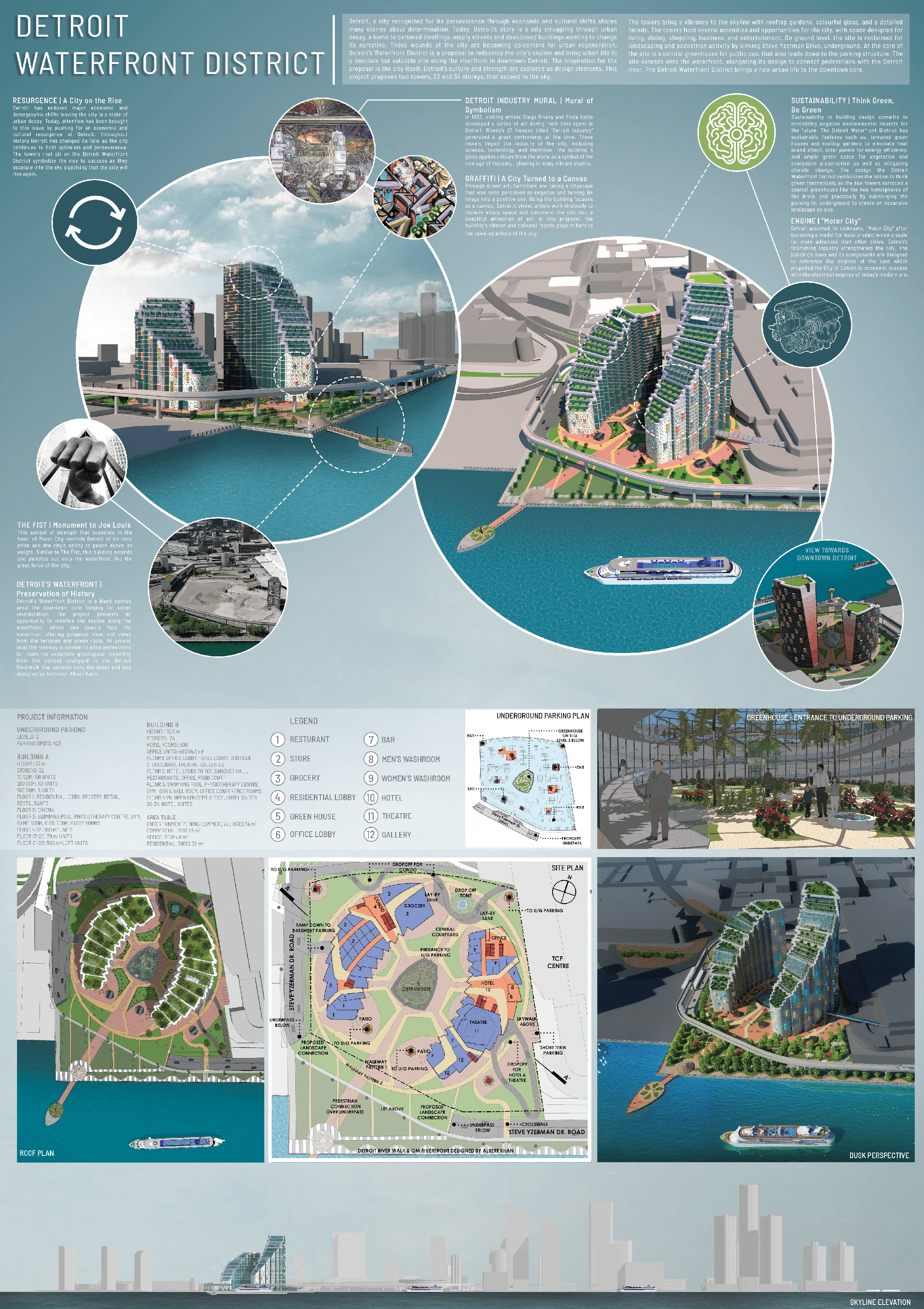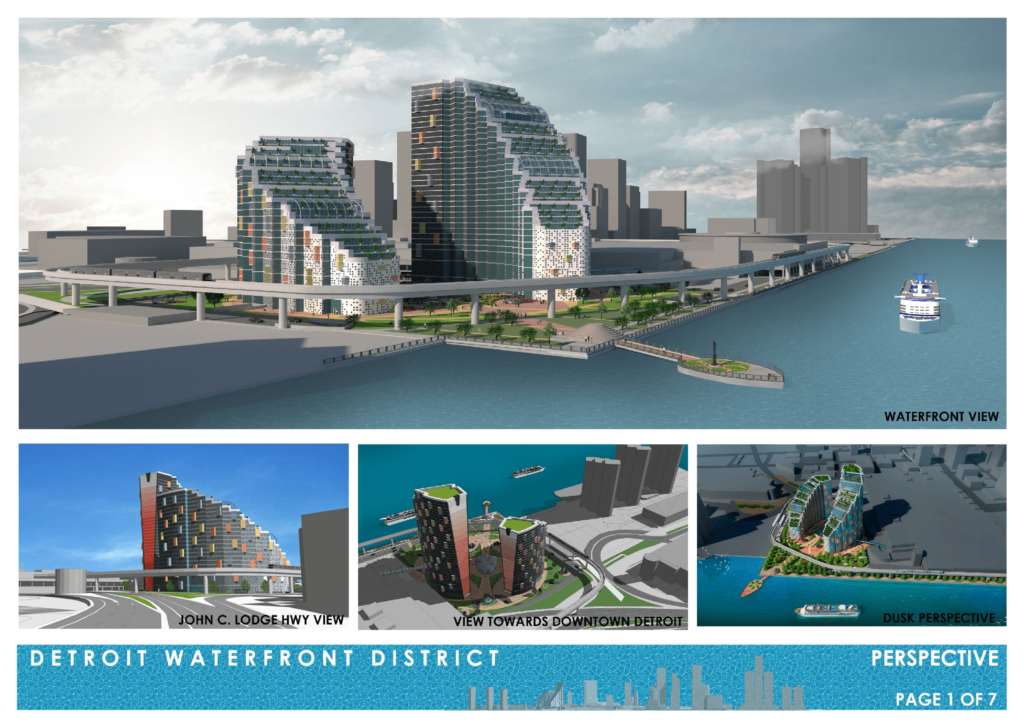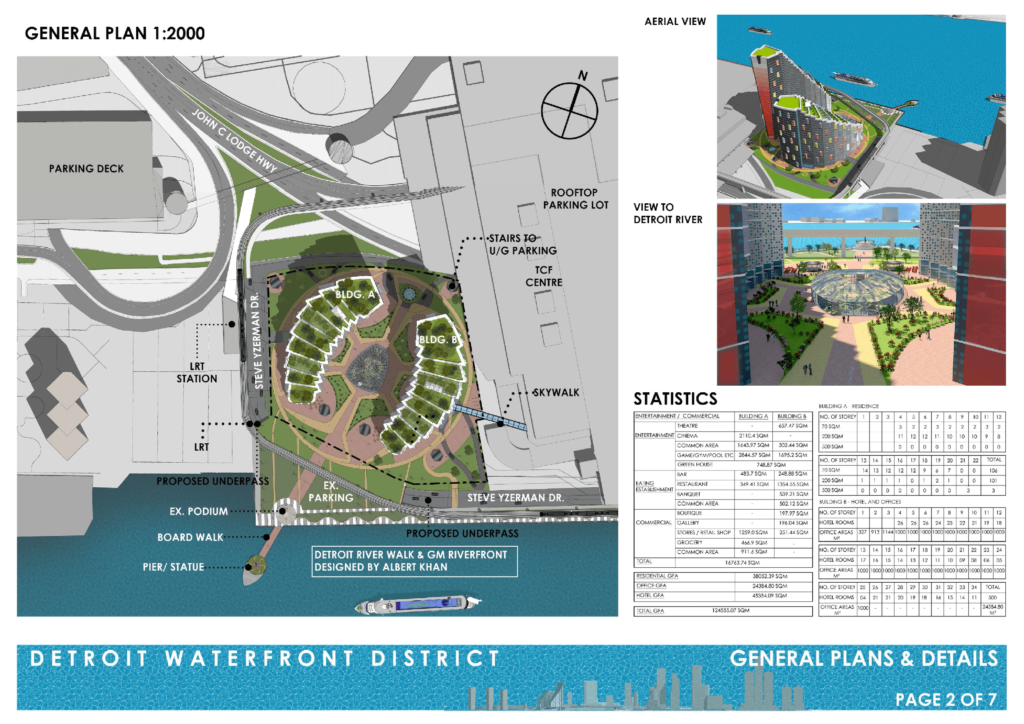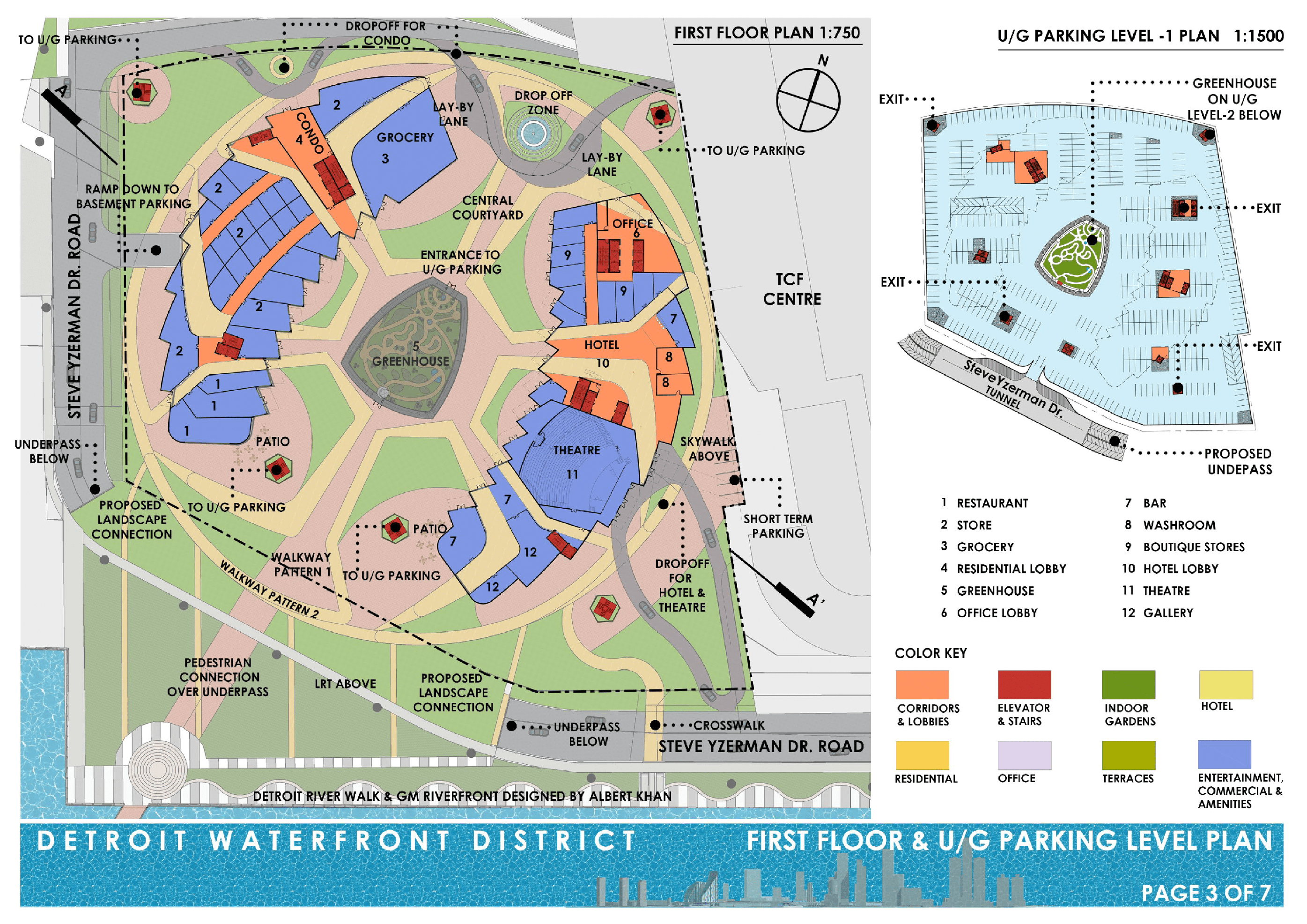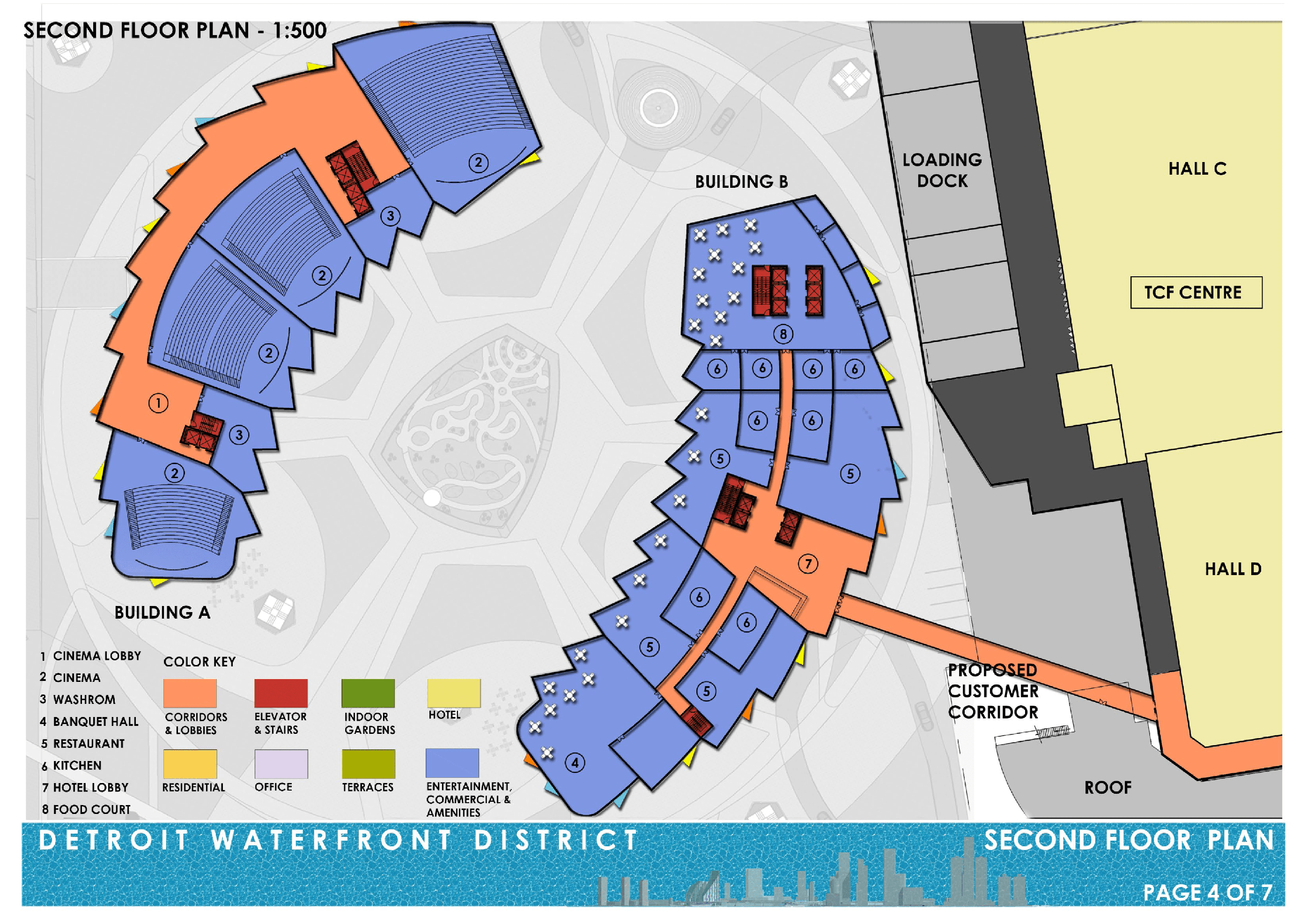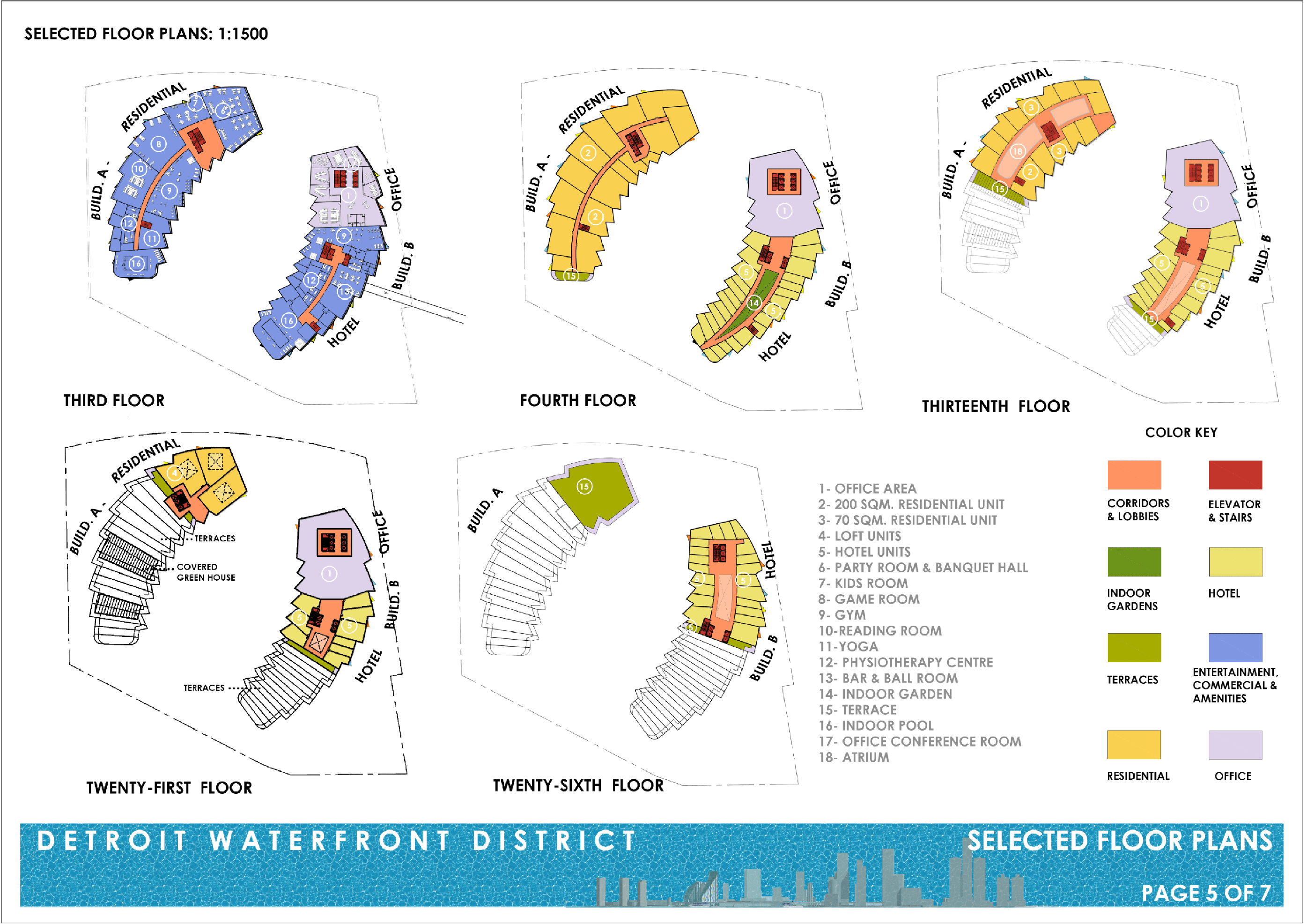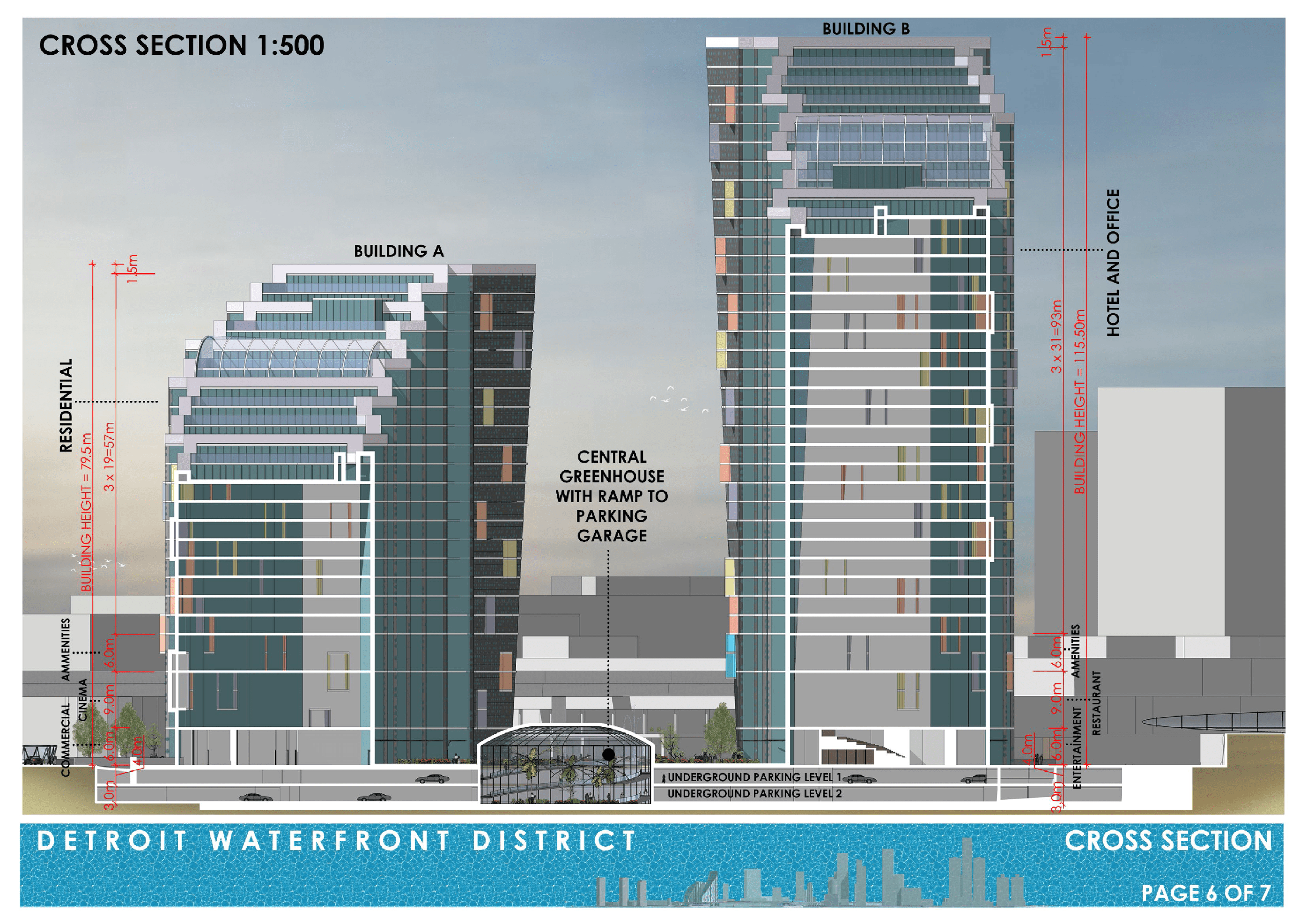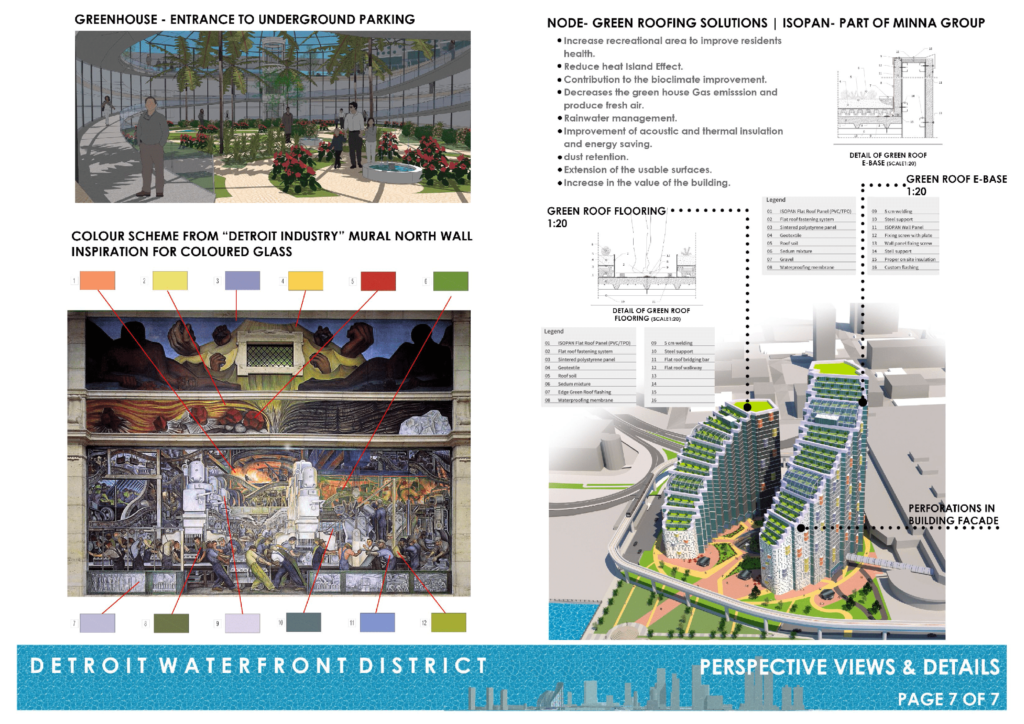This competition proposes Detroit’s Waterfront as a fascinating canvas for urban redevelopment with the opportunity for architects to design a building complex that will redefine the city’s skyline. Today, Detroit is a city struggling through urban decay where deserted areas of the city are becoming epicentres for urban regeneration. Detroit’s Waterfront District is a proposal to redevelop the city’s skyline and bring urban life to a desolate but valuable site along the riverfront. The inspiration for the proposal is the city itself, where Detroit’s culture and strength are explored as design elements.
This project proposes two towers, 22 and 34 storeys tall, that ascend into the sky and project over Downtown Detroit. The height and mass of the two towers create an impactful view of the city’s skyline that can be viewed from across the river from Canada. The towers also bring vibrancy to the skyline with rooftop gardens, colourful glass, and a detailed facade. As Detroit is known to be a city turned to a canvas through celebrated graffiti on building facades, the Detroit Waterfront District pays tribute to the vibrant culture of the city’s street art by using colourful building materials.
Since the location of the site is known to be a hub for social gatherings along the riverfront, the complex is designed to bring more amenities and opportunities to this part of the city. The towers host several amenities and opportunities for the city, with space designed for living, dining, shopping, business, and entertainment. The 22-storey tower is 57 meters in height, has over 200 residential units with public amenities like grocery, retail, restaurants, a cinema, swimming pool, gym, and party room. The 34-storey tower is 115 meters in height, with 500 hotel rooms, office units, retail, a theatre, banquet hall, food court, restaurants, a swimming pool, and a gym. Both towers combine living, dining, and recreation in many forms of amenities.
The two towers are connected on ground level as they share a site that is designed for pedestrian activity. The site is reclaimed for landscaping and pedestrian activity by sinking Steve Yzerman Drive, underground. At the core of the site is a central greenhouse for public use, that leads down to a 2-level parking structure. The site extends onto the waterfront with walking paths that connect pedestrians to the Detroit River. The Detroit Waterfront District has sustainable features such as terraced greenhouses and rooftop gardens to eliminate the heat island effect, solar panels for energy efficiency, and ample green space for vegetation, ecosystem preservation and to mitigate climate change.
The Detroit Waterfront District brings a new urban life to the downtown core by revitalizing this desolate site with a building complex designed to provide extensive amenities for the community. This impactful structure is intended to create a visually distinctive architectural design along Detroit’s skyline.
